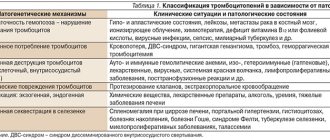What are triglycerides and why are they needed?
The substances are classified as simple fats and are present in large quantities in subcutaneous fat. They can enter the body in two ways:
- synthesis in the liver from carbohydrates and bile acids and subsequent transportation by low-density lipoproteins into the blood;
- nutritionally, i.e. together with food. This path is predominant and it is nutritional errors that often lead to the development of hypertriglyceridemia. Transport of triglycerides in this case is carried out by chylomicrons mainly into muscle fibers.
The main function is energy. However, with a large amount, the body is not able to absorb a huge amount of energy and begins to store it in the form of fat. Moreover, reserves are deposited not only under the skin, but also on internal organs, and metabolic processes are also disrupted. In such cases, the likelihood of developing diabetes mellitus, myocardial infarction, atherosclerosis, and stroke increases.
Blood triglyceride test
The biomaterial for this study is venous blood. Analysis is prescribed for the following purposes:
- To assess the possibility of the appearance of symptoms of atherosclerosis, which is characterized by the uncontrolled growth of cholesterol plaques and there is a risk of complete blockage of the vessel by them.
- To monitor the progress of treatment with drugs used to reduce the level of glycerol derivatives.
Situations when a doctor prescribes a test for triglycerides:
- Together with an analysis of cholesterol levels or to determine a general lipid profile. This study is recommended for adults who have crossed the 20-year threshold at least once every 4-5 years;
- For preventive purposes, if the patient is recommended to eat a diet with a reduced amount of fat, to control lipid levels and determine the risk of heart and vascular diseases;
- For diabetes mellitus, this analysis is not only recommended, it is mandatory, since the levels of sugar and triglycerides are constantly dependent on each other;
- If a child has been diagnosed with elevated cholesterol levels or heart disease, monitoring of triglycerides is necessary.
Causes of hypertriglyceridemia
The concentration of triglycerides in the blood changes in direct proportion to the patient's age. These changes are a variant of the norm if they proceed smoothly and fit into certain indicators. Hypertriglyceridemia can also develop for other reasons.
Hereditary factors are caused by genetic changes that are transmitted in an autosomal dominant manner from generation to generation. Currently, scientists have not been able to identify the exact gene and the mutations that occur in it. There is an assumption that hereditary hypertriglyceridemia has genetic heterogeneity, i.e., different genes change in each patient. However, most people have a disorder in the breakdown of triglycerides. As a result, the balance between their synthesis and catabolism shifts, which leads to an increase in their levels in the blood.
Hypertriglyceridemia can develop in pregnant women, when taking certain groups of medications, or in the presence of concomitant diseases, for example, liver pathology. As noted above, the most common cause of hypertriglyceridemia is dietary errors, namely increased consumption of fats and carbohydrates, since these nutrients are the building material for triglycerides.
Diagnostic methods
Diagnosis of hypertriglyceridemia is carried out mainly by laboratory methods. The following parameters are monitored in the blood serum:
- cholesterol;
- triglycerides;
- low and high density lipoproteins;
- specific liver enzymes, etc.
Additionally, instrumental diagnostic methods, for example, ultrasound of the abdominal organs, may be prescribed. If there is evidence of the hereditary nature of the disease, the doctor prescribes genetic tests, which can be taken at a medical genetics clinic.
What do high and low levels of triglycerides in the blood indicate?
If the analysis shows a deviation from the norm, then this is cause for concern. A high content indicates possible cardiovascular ailments, kidney diseases, diabetes, pancreatitis, and all kinds of liver diseases. Biochemistry will invariably show excessive levels of glycerol derivatives in the blood of alcoholics. An increase may also occur during pregnancy or taking hormones. Since the list of possible causes is huge, a triglyceride test is only a small part of the tests to make a correct diagnosis. It is possible to reduce the level of these substances if the causes of deviations from the norm are correctly identified.
A deficiency of these substances can occur with chronic pulmonary diseases, poor nutrition, various injuries, with prolonged use of vitamin C, and kidney diseases.
Bringing glycerol derivatives to the proper level is possible with the help of medications or folk remedies.
Treatment of hypertriglyceridemia
The specific treatment plan largely depends on the patient’s condition and the reasons that led to the development of hypertriglyceridemia. If a person leads a sedentary lifestyle, is overweight, or does not eat properly, then he is prescribed a diet that involves reducing fat in the diet, a physical activity plan is drawn up, and they are helped to adjust the weight.
Drug treatment for hypertriglyceridemia involves prescribing drugs that lower blood lipid levels. These include statins, fibrates, vitamin B5. Monotherapy is usually used in minimal dosages. However, if the treatment does not bring the desired effect, the doctor may prescribe a complex of several drugs. After the triglyceride level returns to normal values, the patient receives a list of recommendations regarding his lifestyle and dietary habits. If you ignore your doctor's advice, hypertriglyceridemia may develop again.
Interpretation of results
If a deviation from the norm is detected, 4 risk groups are distinguished:
- Acceptable risk – up to 1.7 mmol/l – small risk of developing heart and vascular diseases;
- Average risk – 1.7-2.2 mmol/l – average probability of developing heart and vascular diseases;
- High risk – 2.3-5.6 mmol/l – high likelihood of heart disease;
- Very high risk - more than 5.6 mmol/l - critical value, there is a risk of pancreatitis, it is necessary to urgently begin treatment with drugs that reduce the amount of triglycerides in the body.
Triglyceride levels below normal may indicate:
- Hypoliproproteinemia;
- Disorders of the thyroid gland;
- Cerebral infarction;
- Improper absorption function in the intestines;
- Lung diseases.
Conclusion
You can lower your triglyceride levels by changing your diet, maintaining a moderate weight, and exercising regularly.
You should also avoid refined carbohydrates, added sugars and saturated fats. Replacing them with low-sugar fruits and vegetables, whole grains and fatty fish can reduce triglyceride levels and the risk of obesity and cardiovascular disease.
It is important for the doctor to decide whether this approach is enough to make a difference or whether medications will be necessary. You should definitely contact your doctor to find out which approach is most appropriate.
Medicines designed to lower triglyceride levels
- Fibrates. Belong to carboxylic acids. The decrease in the indicator occurs due to the amphipathic function;
- A nicotinic acid. Acts in the same way as fibrates, but increases the level of “good” cholesterol;
- Omega-3 fatty acids. With their help, a decrease in triglycerides is achieved quickly. A cheap and accessible product that can be found in every pharmacy is fish oil;
- Statins. Fights “bad” cholesterol.
Fish oil is a widely available source of omega-3 fatty acids that help maintain proper triglyceride balance.
The listed drugs must be used with caution. It is worth remembering that taking these medications can cause various side effects:
- stomach upsets;
- dizziness;
- a sharp decrease in blood pressure;
- breathing problems;
- rash.
Velkov V.V.
The relationship between elevated triglyceride concentrations and cardiovascular risk is not simple. The reason is a complex system of connections between cardiovascular risks and disturbances in the levels of other lipids, especially those associated with cholesterol, and with other metabolic pathologies. Moreover, in some cases, hypertriglyceridemia (or hyperglyceridemia) does not have a noticeable effect on atherosclerotic vascular diseases, and this makes it difficult to accurately determine whether triglycerides are really a risk factor for them. However, it is considered well established that the risks of nonfatal myocardial infarction and the risks of sudden death from heart attacks increase with increasing triglyceride up to 800 mg/dL (9.01 mmol/L) but decrease sharply at higher triglyceride levels.
The association of elevated triglycerides with cerebrovascular disease is less certain. In general, elevated triglycerides often (but not always) lead to cardiovascular disease, and the quantification of this risk is highly dependent on the type of lipoproteins in which they are packaged. On the other hand, different causes of glyceridemia (genetic or caused by an unhealthy lifestyle) lead to different profiles of the ratio of different lipoproteins, and this, in turn, leads to different types of complications.
The combination of 1) high triglyceride levels, 2) low HDL-C , and 3) small dense LDL-C is commonly referred to as the lipid triad , resulting in diabetic dyslipidemia and atherogenic dyslipidemia. The lipid triad, in turn, is strongly associated with conditions of insulin resistance such as metabolic syndrome, polycystic ovary syndrome, and type 2 diabetes and, in general, is an important risk factor for early atherosclerosis. According to current US practice, elevated triglyceride levels are:
- marker of atherogenic lipoproteins,
- metabolic syndrome marker ,
and a very high level of triglycerides (more than 1000 mg/dL, 11.2 mmol/L) is a risk factor for pancreatitis .
1. The risk associated with elevated triglycerides depends on what lipoproteins they are packaged into. In the blood, triglycerides are packaged into five types of different lipoproteins: 1) chylomicrons - contain 85-90% triglycerides, 2) very low density lipoproteins X-VLDL - 50-60%, 3) intermediate density lipoproteins X-LDL - 20-25%; 4) low-density lipoproteins C-VLDL ≤10%: 5) high-density lipoproteins C-HDL ≤10%. Chylomicrons and VLDL-C are the richest in triglycerides. They are synthesized in the intestinal epithelium from fats that we get from food. Long chains of fatty acids are converted into triglycerides with the help of microsomal transfer protein and then combined with: cholesterol (exogenous, also obtained from food), with proteins (apolipoprotein B-48), and phospholipids, which ultimately forms chylomicrons. Then chylomicrons enter the bloodstream, where they interact with lipoprotein lipase, which is located in the capillary endothelial cells of muscle and adipose tissues. Lipoprotein lipase activates apolipoprotein Apo C-II, located on the surface of chylimicrons, and breaks down triglycerides packaged in chylomicrons, which then either enter the muscles, where they are utilized for energy needs, or are stored in adipose cells “in reserve.”
1.1. Initially “good” chylomicrons can become “bad”: a decrease in size leads to atherogenicity. Chylomicrons themselves are not atherogenic - they are too large to penetrate the vascular epithelium and lead to endothelial dysfunction. But when their triglyceride “filling” is consumed and goes either for cellular needs or for storage, chylomicrons, or rather their remnants (remnants) greatly decrease in size and are freed from lipoprotein lipase. Such already small and already rhamnant chylomicrons contain almost no triglycerides - but what remains in them becomes atherogenic - cholesterol, originally obtained from food (besides it, B-48 and apo E remain in the rhamnant particles). It is the small size of rhamnant chylomicrons that allows them to penetrate arterial walls and/or bind to specific sites on macrophages and stimulate their transformation into foam cells. Of course, such atherogenic chylomicron remnants must be removed from the bloodstream. Apolipoprotein E (Apo E), located on the surface of rhamnant particles, binds to LDL-C receptors in the liver and then is utilized in the liver. But before this moment she can have time to do her “dirty atherogenic deed”. So triglycerides themselves are not atherogenic, they make chylomicrons atherogenic when they leave them. Elevated triglycerides are a marker, but not a factor of atherogenesis. A normal fasting triglyceride level is less than or equal to 150 mg/dL (1.69 mmol/L).
1. 2. VLDL-C: increasing density “turns” them into “bad” LDL-C. VLDL-Cs are smaller in size than chylomicrons, but higher in density. VLDL-C are formed not where chylomicrons are and not in the same way as they are. VLDL-C are formed in the liver from endogenous triglycerides and cholesterol, which are synthesized there in the liver; VLDL-C are formed thanks to the microsomal transport protein. Then VLDL-C acquires apolipoprotein Apo B-100. When VLDL-C enters the bloodstream, apolipoproteins C and E are attached to their surface; the source of these apolipoproteins is other lipoproteins, in particular LDL-C. Like chylomicrons, VLDL-C are captured by lipoprotein lipases located on muscle and adipose tissues, which in this case also break down their triglyceride “filling”. Once the VLDL-C core is freed from triglycerides, lipoprotein lipase is no longer needed and dissociates from the VLDL-C remnants, which continue to contain cholesterol. These rhamnant VLDL-C are also called intermediate-density lipoproteins. Normally, they should also be catabolized by liver receptors, the activity of which is provided by Apo E. But this does not always occur to the proper extent, in the bloodstream due to hepatic lipase. rhamnate VLDL-C can “convert” into highly atherogenic LDL-C. In general, it is the release of triglycerides from chylomicrons and VLDL-C and the subsequent ineffective utilization of the remnants of chylomicrons and VLDL-C that leads to cardiovascular risk.
1.3. The appearance of plasma alone may indicate hyperglyceridemia. Indeed, by the appearance of plasma or serum, one can roughly estimate the concentration of triglycerides and establish the presence of chylomicrons: 1) plasma is transparent - the concentration of triglycerides is usually normal; 2) the plasma is turbid or slightly opalescent – the concentration of triglycerides is increased; 3) plasma is opaque and resembles milk - the concentration of triglycerides exceeds 500 mg/dL (5.63 mmol/L). To visually identify chylomicrons, the plasma is kept for several hours at 4°C. Chylomicrons form a superficial creamy layer or film. Important note: excess chylomicrons can also be found in the plasma of healthy people if the blood was not taken on an empty stomach (especially after eating a meal rich in triglycerides).
2. Triglycerides and the risks of cardiovascular disease. The limit beyond which elevated triglycerides begin is 150–199 mg/dL (1.69–2.24 mmol/L). Patients with borderline triglyceride values should be tested for metabolic syndrome, an easily overlooked condition that can lead to atherosclerosis. The diagnosis of hyperglyceridemia is made when triglyceride concentrations are higher than 200 mg/dL (2.25 mmol/L). Important note: if triglyceride levels exceed 400 mg/dL (4.5 mmol/L), the LDL-C concentration cannot be calculated; it must be determined directly. High triglycerides ≥ 500 mg/dL (≥ 5.63 mmol/L). In this case, the first goal of therapy is to reduce triglycerides themselves, since they are no longer only a marker, but also a risk factor. For patients at risk of atherosclerosis, the second goal of therapy in this case is to lower LDL-C levels. Ultra-high triglycerides - above 1000 mg/dL (11.2 mmol/L). This is a high risk of pancreatitis. In these cases, triglyceride concentrations should be reduced. Patients with triglyceride levels above 2000 mg/dL (22.4 mmol/L) require emergency care.
3. Hyperglyceridemia: hereditary and ill-acquired. The main sign by which hyperglyceridemia is classified is whether it is primary (genetically congenital), or secondary - caused by an unhealthy lifestyle and unhealthy diet. Primary - familial hyperglyceredemias - are more severe than acquired ones and require drug treatment; changes in diet and exercise cannot get rid of them.
3.1. Familial hypertriglyceridemia (hyperlipoproteinemia type IV). This is what is most often encountered in general practice. Triglyceride concentrations are usually between 250 and 1000 mg/dL (2.8 – 11.2 mmol/L), and VLDL-C levels are often elevated. Chylomicronemia can increase triglyceride levels even further. If Apo E is also elevated, this pathology can be diagnosed as familial combined hyperlipidemia. It is exacerbated by frequent alcohol consumption and sometimes leads to early cardiovascular disease. Familial hypertriglyceridemia is usually associated with insulin resistance.
3.2. Familial hypertriglyceridemia with chylomicronemia (hypertriglyceridemia type V). It is observed in adults and is considered a rare case of familial hyperglyceridemia. Triglyceride levels above 1000 mg/dL (11.2 mmol/L) are at high risk for pancreatitis. As with familial hypertriglyceridemia, such patients have elevated VLDL-C levels and markedly elevated chylomicron levels. This pathology is associated with insulin resistance, obesity and other secondary (non-hereditary) causes of hypertriglyceridemia. Such patients should reduce their weight, reduce the amount of fat and simple carbohydrates in their diet, and begin taking medications if triglyceride levels persist above 1000 mg/dL (11.2 mmol/L).
3.3. Familial chylomicronemia (a form of hyperlipoproteinemia type I). This is a very rare pathology. From birth, triglyceride levels are extremely high - 1000 - 10,000 mg/dL (11.2 - 112.0 mmol/L). Reason: Due to genetic defects, excess chylomicrons are not utilized by the liver. Mutations leading to this impair the function of lipoprotein lipase or, less commonly, its cofactor Apo C-II. Often in such patients, recurrent pancreatitis is observed already in childhood, but early atherosclerosis usually does not develop. Such patients should be evaluated by a lipid specialist. Extremely high triglyceride concentrations can usually be reduced by a strict diet that limits fat intake and, in some cases, by consuming fish oil.
3.4. Familial hyperlipoproteinemia with phenotype V. Its main manifestation is severe hypertriglyceridemia caused by an increase in chylomicrons and VLDL-C. Triglyceride levels are usually 1000–2000 mg/dL (11.2–22.4 mmol/L), but can vary widely under the influence of alcohol, diet, glucocorticoids, estrogens, as well as concomitant diseases (obesity, diabetes mellitus) . In families with this disease, the risk of atherosclerosis is usually not increased, although total cholesterol levels may be increased. The lipoprotein profile in the same patient can change under the influence of environmental factors (for example, diet) and concomitant diseases.
3.5. Familial lipoprotein lipase deficiency (hyperlipoproteinemia type I). This rare disease, characterized by the absence of lipoprotein lipase activity and severe hypertriglyceridemia, typically presents in childhood. Few patients live to age 50, although their risk of atherosclerosis is not increased.
3.6. Familial mixed hyperlipoproteinemia. Due to excessive accumulation of apolipoprotein B-100 (hyperapobetalipoproteinemia), many patients have an increased risk of atherosclerosis. In 30-35% of patients and their relatives with dyslipoproteinemia, hypercholesterolemia is observed, in another 30-35% of cases hypertriglyceridemia is observed. In other cases, hypercholesterolemia is combined with hypertriglyceridemia. In some patients, with normal LDL-C, HDL-C is reduced; Small LDL-C may also be observed. The most common comorbidities are endogenous obesity, insulin resistance and diabetes mellitus.
3.7. Familial dysbetalipoproteinemia is a form of hyperlipoproteinemia type III. This is the result of a homozygous mutation in the Apo E gene (the mutation is contained in both Apo E genes located on both homologous chromosomes), weakening the binding of rhamnant lipoproteins to lipoprotein receptors, which impairs their catabolism and leads to an excess of unutilized chylomicrons and rhamnant VLDL-C. Such patients often experience early cardiovascular disease. Typically, this pathology is mild until other risk factors are added to it: alcohol consumption, hyperthyroidism, obesity, diabetes or kidney disease. In this case, triglycerides and total cholesterol often increase to the same extent as with hyperglyceridemia. The HDL-C concentration is typically normal. How then to distinguish dysbetalipoproteinemia from hyperglyceridemia? For a more accurate diagnosis of familial dysbetalipoproteinemia, ultracentrifugation is necessary (which is difficult in routine practice). The ratio of the concentrations of VLDL-C and triglycerides greater than 0.3 clearly indicates an enrichment of VLDL-C and, thereby, dysbetalipoproteinemia. Although most laboratories use the Freudwald equation (LDL C = total cholesterol - minus - [triglycerides/5) to determine LDL-C, this equation cannot be used for the clinical diagnosis of familial dysbetalipoproteinemia. In such patients, LDL-C concentrations must be determined directly. Most patients patients suffering from dysbetalipoproteinemia require drug therapy.
3.8. Secondary hyperglyceridemia. They are caused by poor diet and lifestyle. Their main reason is an “atherogenic” lifestyle: excess calories, excess alcohol consumption, lack of physical activity. Over time, this leads to obesity, insulin resistance, diabetes and cardiovascular disease. It is this kind of life that is the reason for the massive spread of metabolic syndrome in industrialized countries. Excess calories stimulate the synthesis of VLDL-C in the liver. This in turn increases triglycerides and decreases HDL-C and stimulates the formation of highly atherogenic small LDL-C. Moreover, excessive intake of saturated fat and cholesterol may decrease LDL-C receptor activity in the liver, thereby increasing LDL-C levels independent of changes in triglyceride concentrations.
Help Five factors of metabolic syndrome :
1) high triglycerides >150 mg/dl or 1.69 mmol/l, 2) low HDL-C <50 mg/dl or 1.29 mmol/l – for women; <40 mg/dL or 1.03 mmol/L for men; 3) high pressure - from 130/85 mm and above; 4) high blood glucose (from 110 mg/dL or 6.1 mmol/L and above); 5) waist size – more than 88 cm for women and more than 102 cm for men.
To make a diagnosis of metabolic syndrome, the presence of any three factors is sufficient.
Alcohol and Triglycerides Although alcohol increases lipid levels in most people, the effects of regular consumption can vary greatly. Alcohol has a greater impact on triglyceride levels than on HDL-C and LDL-C levels. Alcohol, as already mentioned, stimulates the synthesis of VLDL-C. This occurs because ethanol inhibits the oxidation of free fatty acids and thereby leaves more substrate available for the formation of VLDL-C. And then, excess VLDL-C is “converted” into atheroeic LDL-C (see # 1.2). And if an “atherogenic” life leads to insulin resistance, the likelihood of triglyceridemia increases. Insulin resistance reduces the activity of lipoprotein lipase, and this impairs the catabolism of both chylomicrons and VLDL-C.
Diabetes mellitus and triglycerides The predominant lipid metabolic disorder in diabetes mellitus is hypertriglyceridemia, caused by increased levels of VLDL-C and chylomicrons. The main reasons: 1) insulin deficiency in insulin-dependent diabetes mellitus: in some patients with insulin-dependent diabetes mellitus, the utilization of chylomicrons and VLDL-C is reduced, since insulin is necessary for the synthesis of lipoprotein lipase in adipocytes; 2) in patients with non- -dependent diabetes, excess insulin stimulates lipogenesis and the secretion of VLDL-C from the liver, 3) in patients with insulin- dependent and non -dependent diabetes mellitus without insulin resistance, hyperglycemia also enhances lipogenesis and the secretion of VLDL-C in the liver. In non -dependent diabetes mellitus, HDL-C often decreases, partly due to obesity. In general, the main disorders of lipoprotein metabolism in diabetes mellitus are as follows: accumulation of VLDL-C, small LDL-C, LDLP-C and rhamnate chylomicrons, as well as non-enzymatic glycosylation of apolipoproteins; lipoprotein(a) accumulation. In general, it is hyperglyceridemia, increased VLDL-C, decreased HDL-C and non-enzymatic glycosylation of apolipoproteins (due to excess glucose in the blood) that are the main risk factors for atherosclerosis in diabetes mellitus. Non-enzymatic glosylation of apolipoproteins leads to the fact that lipoproteins associated with cholesterol become “modified”, which induces an inflammatory process leading to endothelial dysfunction, which is the main factor of atherosclerosis. Therapy aimed at maintaining normal glucose levels can prevent or reduce the risk of atherosclerosis and reduce the severity of dyslipoproteinemia.
Kidney disease and triglycerides In nephrotic syndrome, due to increased cholesterol synthesis in the liver, the levels of LDL-C and VLDL-C are increased. LDL-C levels are inversely related to plasma albumin concentrations. Increases in LDL-C and VLDL-C are accompanied by hypertriglyceridemia (due to the accumulation of VLDL-C, VLDL-C, and residual chylomicron components) and a significant decrease in HDL-C. In kidney disease, lipoprotein(a) levels also increase. We also note that hypothyroidism also increases triglycerides, and in the same way as ethanol, indirectly, by reducing the activity of the LDL-C receptor.
4. Different triglyceride levels mean different goals of therapy.
4..1. With moderately elevated triglycerides – a decrease in atherogenic lipoproteins. According to the practice adopted in the USA, when treating patients with hypertriglyceridemia, the first goal should be to reduce LDL-C, and the second - all other “atherogenic” cholesterol, i.e., not related to HDL. In general, “non-HDL-C” or “atherogenic” cholesterol is: total cholesterol minus HDL-C. This convenient single indicator indicates the level of all atherogenic lipoproteins (LDL-C, VLDL-C and ramnate lipoproteins).
4.2. For high triglycerides - urgent reduction of triglycerides. Patients with triglyceride levels of 1000 mg/dL (11.2 mmol/L) or higher are at high risk of acute pancreatitis. Therapy should be aimed at reducing triglyceride levels and changing lifestyle: weight loss, reducing carbohydrate and alcohol consumption. Triglyceride levels respond particularly well to lifestyle changes, and better in men than in women. Losing just 4-5 kg of weight reduces triglyceride levels. Reducing the proportion of carbohydrates in the diet is very useful. In obese patients, a low-carbohydrate diet reduces triglycerides by 20-28%.
5 . Screening for triglyceridemia. US practice requires testing of triglyceride levels in all adults starting at age 20. In this case, the so-called “lipid panel” should be used, measuring 1) triglycerides, 2) total cholesterol, concentrations of 3) LDL-C and 4) HDL-C. If the risk of atherosclerosis is low, tests should be repeated every 5 years. Individuals with multiple risk factors for atherosclerosis should have their triglycerides checked more frequently. It is highly recommended that the patient fast for 9 to 12 hours before screening. In individuals at low risk of atherosclerosis, nonfasting screening may be performed, but if the results are alarming (HDL-C < 40 mg/dL or total cholesterol > 200 mg/dL), repeat measurements are performed on an empty stomach. Patients who have two or more risk factors should always be tested on an empty stomach. The results of lipid panel measurements can be distorted by: acute illnesses, infections, accidents (associated with cerebrovascular disorders), injuries, surgical operations, pregnancy, diet changes, weight loss.
And in conclusion, we emphasize once again that it is necessary to measure triglycerides because there are three reasons for this, namely: elevated triglyceride levels are: 1) a marker of atherogenic lipoproteins; 2) a marker of metabolic syndrome and, 3) extremely high triglyceride levels - a risk factor for pancreatitis.
Literature: Marie R, Grenner D, Mayes P, Rodwell W. Human biochemistry. In 2 volumes. T.1. Translation from English – M.: Mir, 2004.- 381 p., ill. Laboratory diagnostics. Ed. V.V. Dolgov and O.P. Shevchenko. - M.: Publishing house "Reapharm," 2005, 440 p. Dunbar RL, Rader DJ, Demystifying triglycerides: A practical approach for the clinician Cleveland Clinic J Med 2005, 5, N 8, 661-668. Nash DT, Cardiovascular risk beyond LDL-C levels. Other lipids are performers in cholesterol story. Postgrad Med. 2004; 116 (3): 11-15. Ozturk IC , Killeen AA, An Overview of Genetic Factors Influencing Plasma Lipid Levels and Coronary Artery Disease Risk Arch Pathol Lab Med. 1999; 123:1219–1222
Sample meal plan
Below is a sample meal plan that may help lower your triglyceride levels.
| Option 1 | Option 2 | Option 3 | |
| Breakfast | salmon, poached egg and watercress, whole grain rye bread | buckwheat pancake with blueberries and low-fat yogurt | porridge with low-fat or vegetable milk, sprinkled with pumpkin seeds and berries |
| Dinner | Avocado, spinach, tomato and hummus salad | lentil and vegetable soup with oatcakes | sardines on whole grain toast with a side of salad greens |
| Dinner | stir-fry chicken and vegetables with brown rice | butternut squash and tofu curry, served with cauliflower rice | vegetable and bean chili, served with stewed cabbage |
| Snack | banana, almonds | boiled egg and whole grain pita slices | celery sticks and nut butter |
Effective ways to lower triglycerides
A high level of TG in the blood is not a reason to panic. If you start treatment in time, the situation can be corrected. There are several main ways:
- nutrition adjustments;
- playing sports;
- taking medications.
Sometimes one component is enough. Most often, diet and exercise are used together. If these methods do not give the desired effect, medications are added.
Proper nutrition
By changing your attitude towards food, you can improve your body’s health and reduce the risk of developing most diseases. To do this, you need to focus on the right products. Be sure to include fish and other seafood in your menu. They are enriched with healthy proteins and amino acids. Salmon, shellfish, crabs, and oysters are suitable.
According to research from the University of Oregon, daily consumption of such foods reduces TG levels in the blood by 50%.
It will be useful to enrich your diet with dried beans and garlic.
To achieve lasting results, you will have to exclude the following:
- sweets (sugar, cakes, pastries, baked goods);
- fatty meat, lard;
- semi-finished products (sausages, frankfurters, sausages);
- sweet juices, soda;
- alcoholic drinks.
Products to avoid - gallery
Alcohol
Carbonated drinks Sweets and flour products Convenience foods Fatty meats
Physical activity
Physical activity reduces fat mass and normalizes TG levels. Take every opportunity - walk a few stops, take the stairs instead of the elevator, do exercises while watching TV. Ride a bike, go for a run. The main thing in the approach is regularity.
- Blood cholesterol levels - table by age. Cholesterol in the blood - norms for women, men and children
Taking medications
Sometimes it is not possible to avoid taking pharmacological drugs. This is especially true for patients in the older age group and people with a high degree of obesity. The following means are used:
- Fish fat. Contains fatty acids (Omega-3) in sufficient quantities. Effectively normalizes TG levels.
- A nicotinic acid. Reduces the production of dense lipoproteins by the liver.
- Fibrates. Organic compounds that attract and remove fat molecules.
- Satins. More used to lower cholesterol levels. The process of reducing triglyceride concentrations is also affected.
Features of hypertriglyceridemia in men
The level of triglycerides in men increases with age. Due to the higher content of cholesterol and TG, men more often than women suffer from early coronary heart disease, brain disease, strokes, and myocardial infarction.
Elevated triglycerides in men of all ages are most often a consequence of poor nutrition and bad habits. Other common causes are diabetes, previous myocardial infarction, and kidney disease. Older men with gout have high TG levels.








